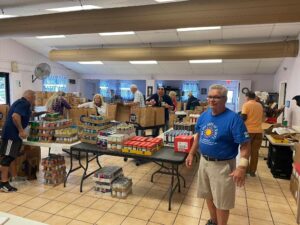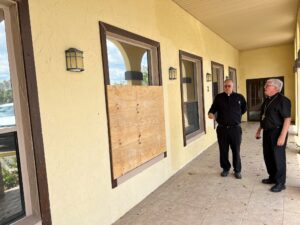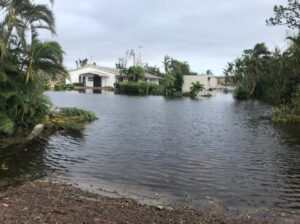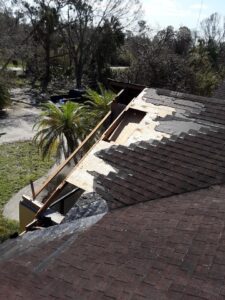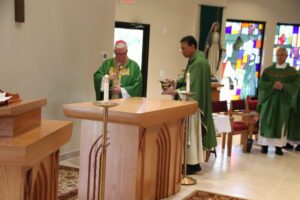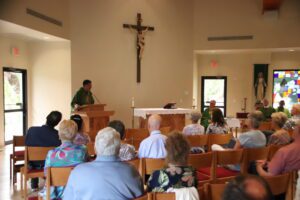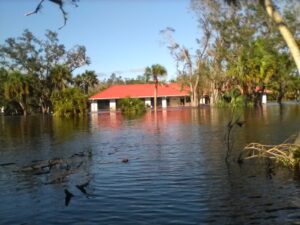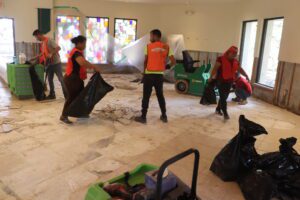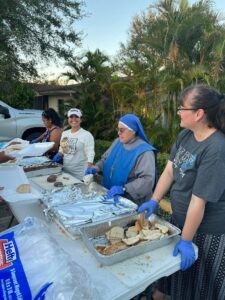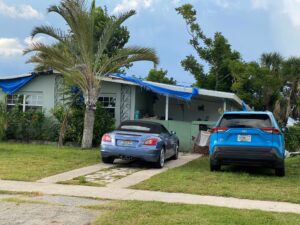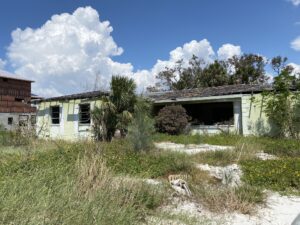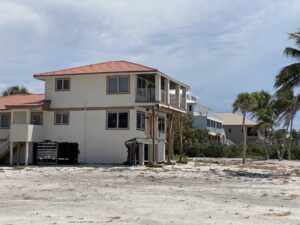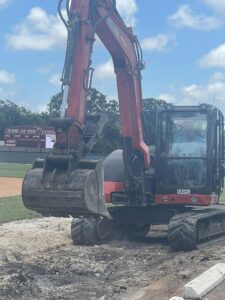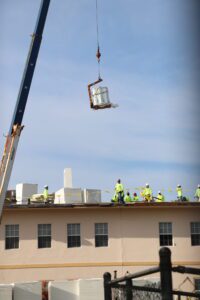Ascension Parish is rising from the rubble as a new church is set to be built in the place of what was destroyed when Hurricane Ian struck Fort Myers Beach in 2022 with 150 mph winds and 15 feet of storm surge. The new church will serve as a beacon of recovery for a community that continues to struggle rebuilding after the storm.
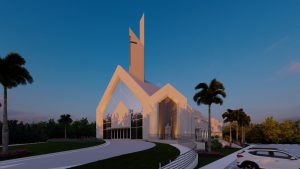
Bishop Frank J. Dewane shared the exciting news with more than 75 displaced faithful from Ascension Parish Oct. 10, 2025, during a presentation at St. Leo the Great Parish Auditorium. Hundreds more watched the presentation via a livestream, while others watched the recording at a later time.
“We hope the news and plans we bring today of a new Church of the Ascension brings you hope for a better tomorrow, and great joy! Your Parish Church is rising anew!” Bishop Dewane said.
The presentation began with an opening prayer from the Jubilee Year, with Bishop Dewane recognizing that the faithful of Ascension have gone through so much since Hurricane Ian.
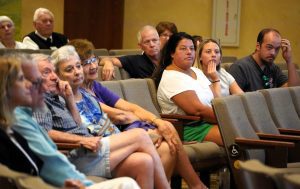
“We gather here today in the shadow of the terrible devastation,” the Bishop continued. “Dear God, we remember and pray for all those who were impacted by that tragic storm, especially those who lost their lives, and we look forward together with hope to a new future for the Parish community here. We remember too, those who came before, the faithful of Ascension Parish since its inception in 1962. Without them, we wouldn’t be here today.”
Bishop Dewane explained the long process of first clearing the hurricane debris, as well as site preparation and planning the design of the new church. The Bishop added that due to the disaster it was originally expected to take up to 5 years before reconstruction could begin. “We are at the 3-year mark, and we are doing well. We have overcome many obstacles to get to this point, and we are very pleased to be moving forward.”
Richard Cain, a parishioner at Ascension for 55 years, said he was overjoyed by the announcement and the look of the proposed church.
“I didn’t know what to expect, and I am very happy to see we will have a beautiful church that will be on Fort Myers Beach for many years to come,” Cain said. “This is a great day.”
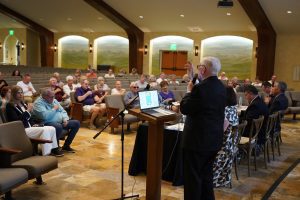
Father William Adams, the retired Pastor of Ascension, was also present for the presentation and complimented the Bishop for the vision of the new Parish church.
Conceptual drawings and a site map were shared by Adrian Karapici, an architect with AM Design Group.
Karapici explained that the new construction includes a single 14,670 square foot structure which is both a church and Parish Hall. The church will seat 738, a significant increase over the previous church.
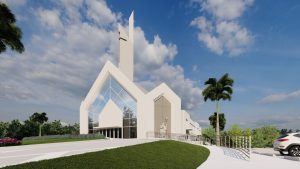
The exterior features soaring roofs lines and a hurricane resistant glass front, as it rises above the sanctuary as a symbol of faith and unity. Trinity symbolism is integrated into the face. A bell tower will have an open cross with a backlit component visible after sunset. The tower height and cross makes it a landmark, emphasizing the church’s spiritual and community importance.
The property includes an enhanced Memorial Garden, ample parking, new street access, an elevated driveway to the front of the church, a connected level walkway from the front entrance of the church to the Parish Hall, and much more.
The structure is designed to withstand 175 mph winds and will be elevated to protect against potential storm surge, ensuring durability over time.
The narthex, with high vaulted ceilings, will incorporate elements preserved from the destroyed church, including the chandeliers as well as parts of the original wooden roof. Additional elements from the old church will be on display in this area, which is being done to create a meaningful connection to the past.
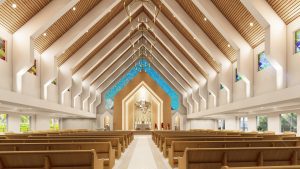
The sanctuary itself emphasizes natural light and acoustic perfection. The interior includes stained glass windows casting vibrant hues creating a tranquil and reverent environment.
The altar stands out with a modern, yet sacred, design and will be made of white marble. Behind the altar will be a luminous backdrop with a statue of the Ascension.
The sanctuary stained-glass fills the space with colorful light uniting with contemporary design and traditional religious symbolism.
The versatile Parish Hall features a commercial kitchen, classrooms and offices, and can be partitioned into smaller spaces as needed. Large windows look out upon an enhanced lake feature.
Following the architect’s presentation of the new Church of the Ascension plan, the faithful offered enthusiastic applause.
Will McKannay, Town Manager for Fort Myers Beach, complimented Bishop Dewane for announcing the rebuild of Ascension Parish and what that action means for the recovery of the island community.
“Today’s announcement is not just about Ascension; it is a powerful reminder that recovery is not just about rebuilding structures, it is about restoring the heart of our community,” McKannay said. “We stand with you, and we look forward to seeing Ascension Parish rise again, stronger than ever. Thank you.”
Following the presentation, the meeting was open to questions. Some asked about details of the project, such as various liturgical elements, while other questions related to the timeline and cost.
The timeline is dependent on many factors, including getting permitting from the Town of Fort Myers Beach. The targeted goal is to break ground in early 2026 and for completion to be in late spring 2027. The final cost to rebuild is estimated at $14.5 million. However, Bishop Dewane said the Diocese had already spent in excess of $2.5 million in the cleanup and site work on the property and final costs are subject to change due to the continual price increase of construction materials and labor.
Before the presentation, approximately 850 letters and emails were sent to parishioners of Ascension. A website (dioceseofvenice.org/ascension-parish/) has been created to help the faithful stay informed about the progress of the construction. The presentation video, livestream recording, and related slideshow are also there.
Anyone interested in supporting the reconstruction of Ascension Parish is asked to visit the site. Parishioners who are interested in naming opportunities for an aspect of the new construction are asked to email newascension@dioceseofvenice.org.
St. Leo the Great Parish, where many of the faithful have been going to Mass, will continue to serve the worship and Sacramental needs of Ascension parishioners until the new Ascension is finished.





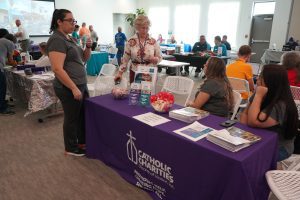
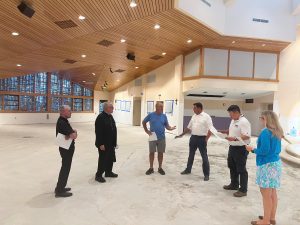
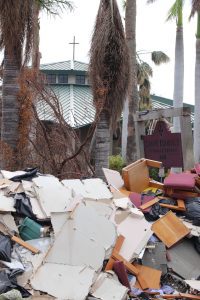
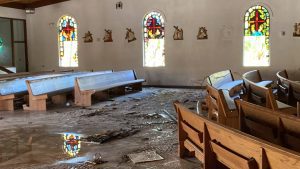

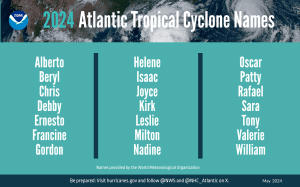
 Catholic Charities assisted more than 335,000 people in need, providing a wide range of services throughout the 10-county Diocese of Venice this year. Service included emergency assistance, food and housing assistance, counseling and mental health services, and programs for seniors and children. For example: $3,000,000 provided financial assistance to keep families housed and fed in the post-pandemic period and recovery; 1,000 families and seniors were provided housing assistance; disaster relief continued for more than 100,000 impacted by Hurricane Ian; 5,000 services were provided to victims of human trafficking; and more than 270,000 hungry children and individuals were assisted at numerous food pantries.
Catholic Charities assisted more than 335,000 people in need, providing a wide range of services throughout the 10-county Diocese of Venice this year. Service included emergency assistance, food and housing assistance, counseling and mental health services, and programs for seniors and children. For example: $3,000,000 provided financial assistance to keep families housed and fed in the post-pandemic period and recovery; 1,000 families and seniors were provided housing assistance; disaster relief continued for more than 100,000 impacted by Hurricane Ian; 5,000 services were provided to victims of human trafficking; and more than 270,000 hungry children and individuals were assisted at numerous food pantries.

